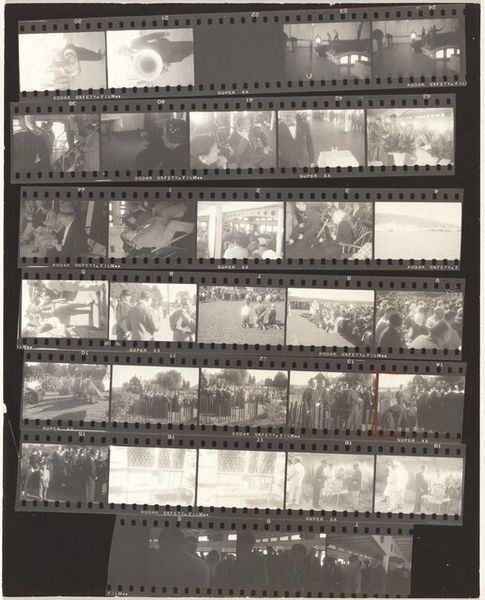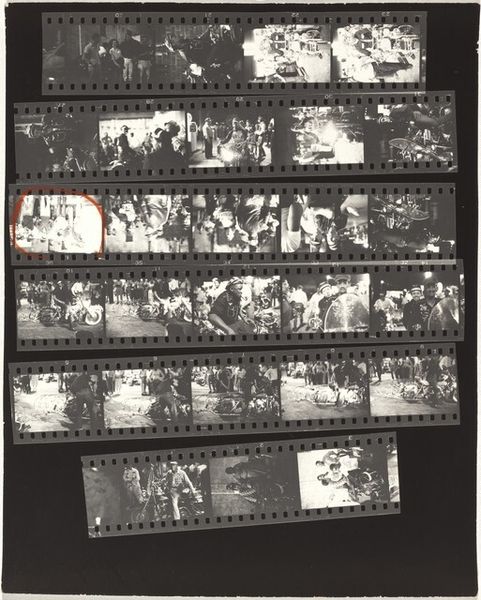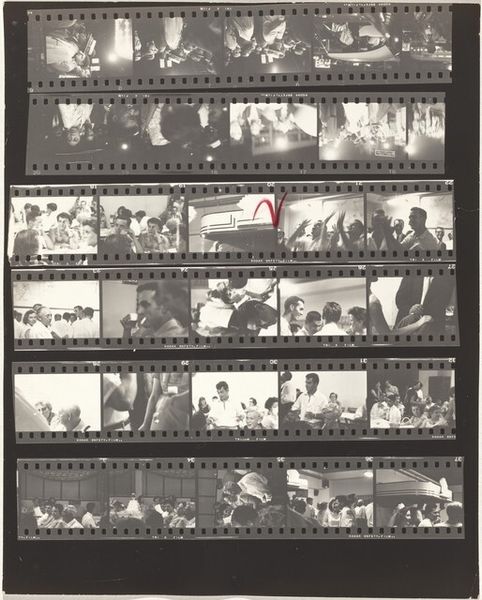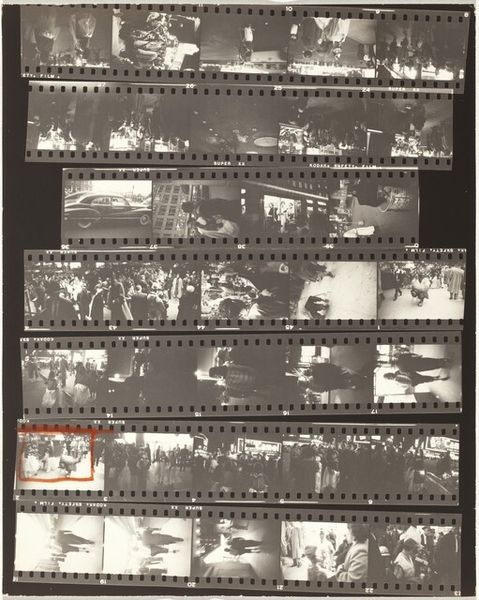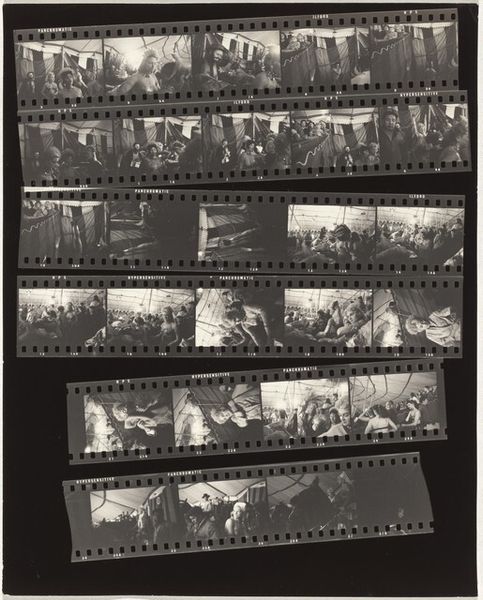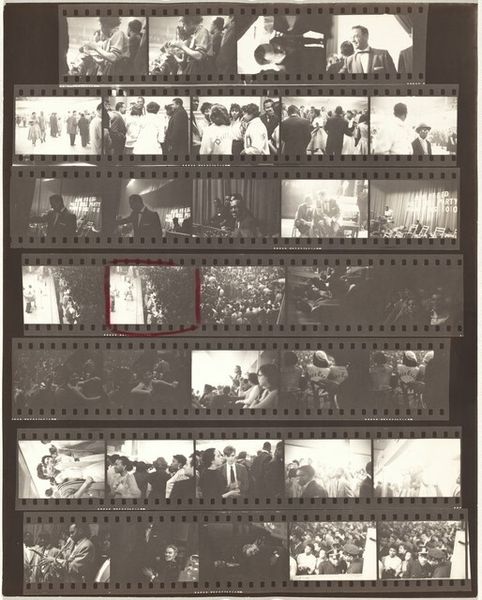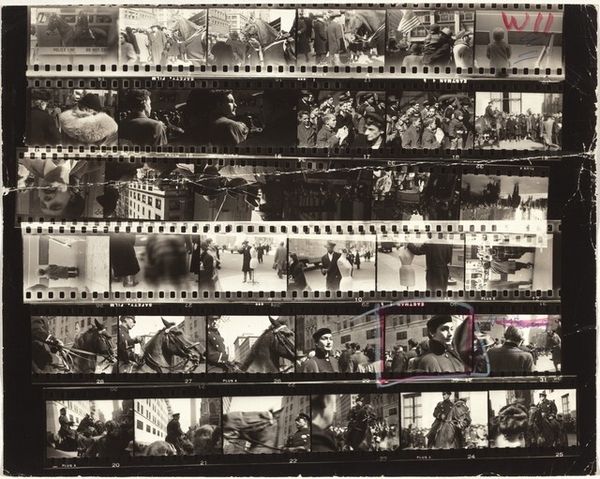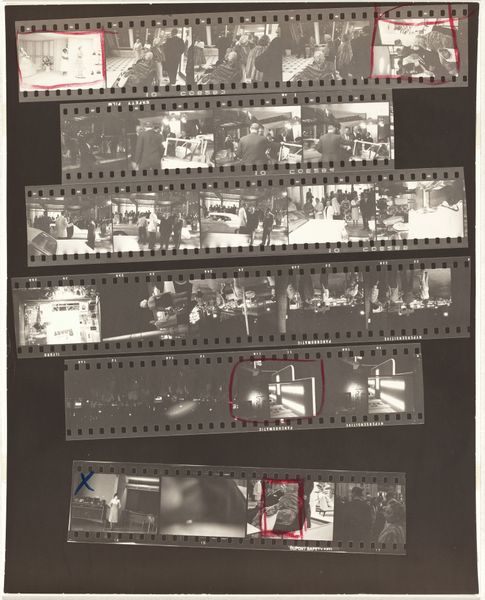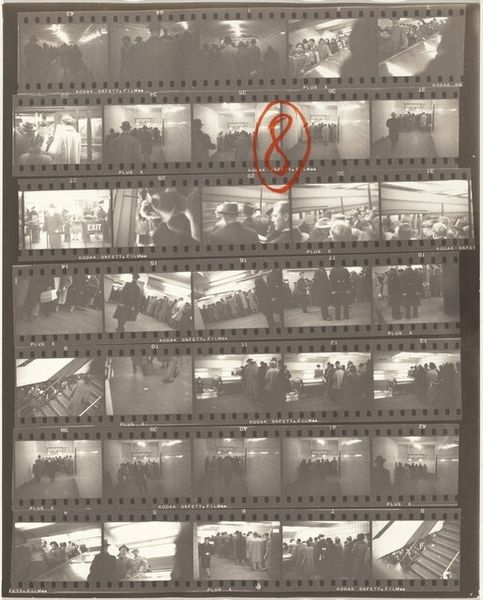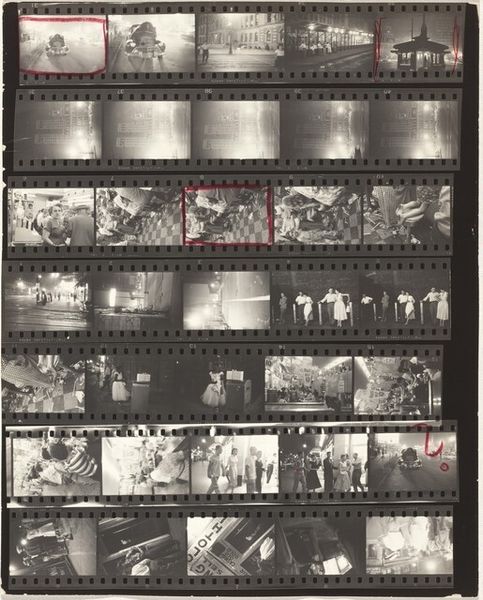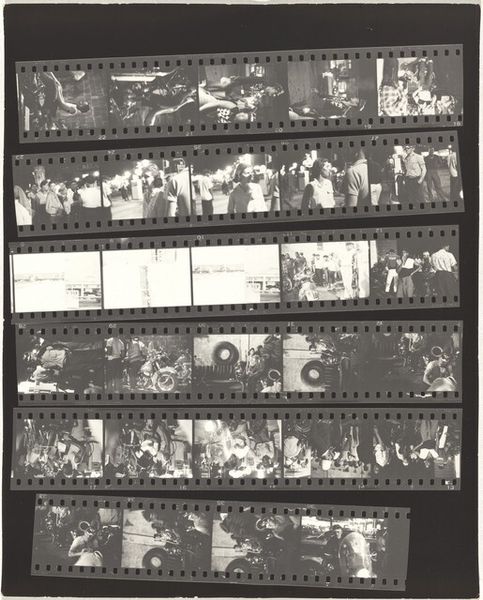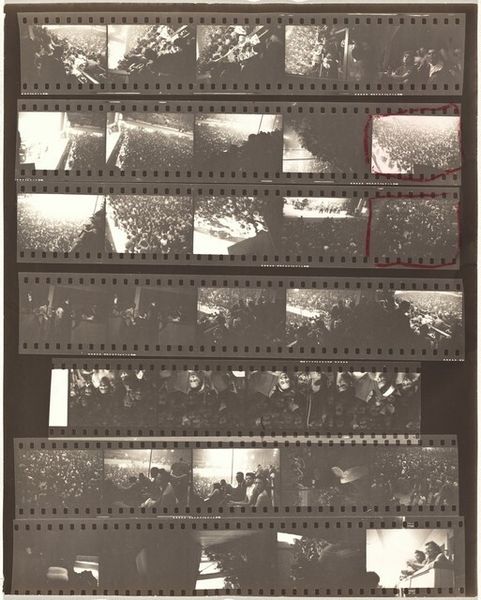
Dimensions: sheet: 25.2 x 20.2 cm (9 15/16 x 7 15/16 in.)
Copyright: National Gallery of Art: CC0 1.0
Curator: Today, we're looking at Robert Frank’s "Rock & roll--Alan Freed 2," a gelatin silver print from around 1957. Editor: It hits me immediately as fragmented and raw—almost like a contact sheet revealing a process more than a polished portrait. Curator: Exactly. It shows multiple frames from a single roll of film, a powerful statement about photography’s capability to capture unfolding narratives. Consider Alan Freed’s role during this period. As a prominent disc jockey, he was pivotal in popularizing rock and roll music and, significantly, introducing Black artists to a wider audience. Frank captured images during Freed’s concerts, highlighting the enthusiasm, and cultural shifts around this new music. Editor: It’s more than just documenting; the photograph feels like a cultural artifact about post-war consumerism, the youth's eagerness, and race relations beginning to get mixed together. It brings attention to materiality. What kind of camera? What kind of film? These elements are not neutral but help convey meaning in ways we should acknowledge. The choices made during its production—the mobility of the camera, for instance— mirror the liberating feeling that Rock n’ Roll embodies. Curator: Frank's focus wasn't purely celebratory. It was critical too. Freed's career, though influential, later crumbled amid the payola scandal, which exposed the corrupt practice of record companies paying DJs to play their records. Frank’s work provides insight into the commodification of music and the intertwined layers of the music industry's landscape at the time. It encourages questioning of authenticity and control within emergent popular culture. Editor: True. We get a glimpse of labor, a peek into the consumption practices around this media sensation, as well as an archival sense. It prompts you to think about photographic representation as an economic product. It’s so gritty; every detail of its construction impacts its meaning. Curator: Absolutely. These rough edges prompt necessary reflection about how the dominant cultural narratives surrounding rock and roll during that time are shaped and disseminated, challenging simplified celebratory readings of musical movements. Editor: Examining Frank's "Rock & roll--Alan Freed 2" has really emphasized for me the power in the process of photography. It gives me an unusual perspective. Curator: And it serves as a vital access point into cultural, political, and economic dynamics embedded in artistic production.
Comments
No comments
Be the first to comment and join the conversation on the ultimate creative platform.
